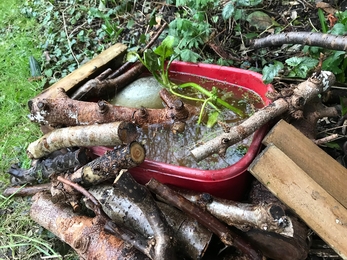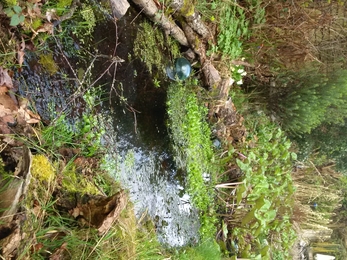When we talk about including water in gardens, the first thing that springs to mind is a pond. Of course, a large pond is fabulous if there is room, but as we all know size is not important. A washing up bowl buried in the ground, or an old saucepan surrounded by pot plants and logs, make a great mini pond. Whatever size or shape of pond you decide to have, just make sure creatures can safely access the water. Consider having pebbles for insects to land on to drink and include shallow areas for birds to bathe. Hedgehogs are a bit ‘accident-prone’ and although they can swim, sadly ‘hogs will tire and drown if they cannot easily get out. So please include a ramp if the pond doesn’t have any shallow sides.
A good wildlife pond ideally has submerged, emergent and marginal plants. Emergent plants provide somewhere for damselflies to climb out and dry their wings, while submerged plants will help oxygenate the water and keep the pond healthy. Any aquatic plants should ideally be native! Hornwort (Ceratophyllum demersum) is a great oxygenator and noninvasive, unlike ‘curly pondweed’ (Lagarosiphon major) or ‘parrots feather’ (Myriophyllum aquaticum) which should be avoided at all costs. These, and other invasive species, can become a big problem, choking the pond and spreading to waterbodies in the wider countryside, where they can outcompete native species, reduce plant diversity and impact aquatic life. Please check before you buy!








